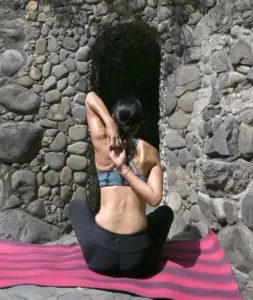
Back pain is a common issue that can result from various causes such as muscle strain, injury, poor posture, or sedentary lifestyle. Mindful-based practices offer gentle yet powerful techniques to alleviate pain, strengthen the back muscles, improve flexibility, and promote overall spinal health.
Benefits of Back Pain Therapy:
Considerations before Starting:
Mindful Poses for Back Pain Relief:
Breathing Exercises for Back Pain:
Meditation Practice for Back Pain:
Summary with Tips:
By incorporating these mindful postures, breathing exercises, and meditation techniques into your routine, you can effectively manage and alleviate back pain while promoting overall spinal health and well-being. Adjust the practices according to your comfort level and enjoy the journey towards a healthier back and body.

GoInwards is an IRS 501(c)(3) Non-Governmental Organization (NGO), chartered to advance wellness through integrative health related awareness, prevention, intervention, and resilience-based educational programs.
FEIN 90-0609802